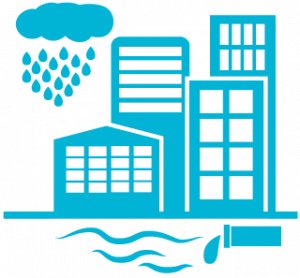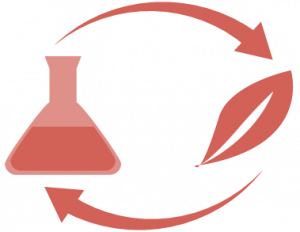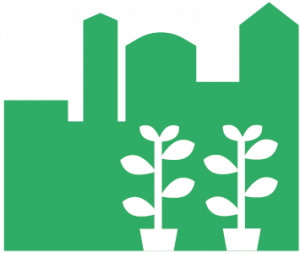
WG1: Built environment
 The built environment puts the most pressure on the natural environment and its role in transforming to a CE system is pivotal (Pomponi and Moncaster, 2017). Within this working group the NBS-CE aspect for buildings and at the settlement level is investigated with the main focus on vegetated building materials and resources to be obtained from the corresponding NBS
The built environment puts the most pressure on the natural environment and its role in transforming to a CE system is pivotal (Pomponi and Moncaster, 2017). Within this working group the NBS-CE aspect for buildings and at the settlement level is investigated with the main focus on vegetated building materials and resources to be obtained from the corresponding NBS
OBJECTIVES
Define available resource streams connected to NBS within the built environment. Create case studies capturing and monitoring the resource loops and investigate possible available resources provided by relevant NBS proposed by other WGs.

WG2: Sustainable urban water utilisation
 This working group investigates the implementation of a safe and functional water cycle within the urban biosphere, where water is defined as a resource where nutrients can be harvested from wastewater, heavy metal adsorbed by filter materials contributing to phytomining and the treated water looped back for irrigation, sanitation and also recreational purposes. The resource recovery methods are established in WG3.
This working group investigates the implementation of a safe and functional water cycle within the urban biosphere, where water is defined as a resource where nutrients can be harvested from wastewater, heavy metal adsorbed by filter materials contributing to phytomining and the treated water looped back for irrigation, sanitation and also recreational purposes. The resource recovery methods are established in WG3.
OBJECTIVES
Critically appraising the established centralised water flow, defining available resources within the water flow and risk assessment on urban water, NBS for storm water management and waste water treatment.

WG3: Resource recovery
 A significant portion of resources is lost when passing through the urban biosphere. The implemented NBS for mitigation or treatment purposes shall become sources for a variety of resources to be harvested, used, reused and recycled. Therefore, possible sources and implementation strategies within the urban biosphere shall be investigated.
A significant portion of resources is lost when passing through the urban biosphere. The implemented NBS for mitigation or treatment purposes shall become sources for a variety of resources to be harvested, used, reused and recycled. Therefore, possible sources and implementation strategies within the urban biosphere shall be investigated.
OBJECTIVES
Identify, appraise and assess the available resources in the urban context, like waste- or runoff water, liquid and solid waste streams, materials from the other WGs, urban pollutants, etc. Combine innovative NBS applications like regenerative biological systems, phytomining or biomining, biofiltering, etc. The outcome will be the creation of new areas for urban farming, waste treatment, runoff treatment and so on.

WG 4: Urban Farming
 The Working Group on Urban Farming will focus on the integration of resources from other working groups (water, nutrients…) into urban farming systems as well as on the resources provided through urban farming for further use in other WGs. The WG will further investigate different urban farming systems especially developed for dense urban areas (e.g. underground farming, vertical and rooftop farming) and their potential for symbiosis with other WGs (e.g.: urban farming with wastewater, urban farming on formally contaminated soil after phytomining was carried out, etc.).
The Working Group on Urban Farming will focus on the integration of resources from other working groups (water, nutrients…) into urban farming systems as well as on the resources provided through urban farming for further use in other WGs. The WG will further investigate different urban farming systems especially developed for dense urban areas (e.g. underground farming, vertical and rooftop farming) and their potential for symbiosis with other WGs (e.g.: urban farming with wastewater, urban farming on formally contaminated soil after phytomining was carried out, etc.).
OBJECTIVES
While the main purpose of urban farming is food production within a city, this COST Action will pay closer attention to other resources available from urban farming usually considered waste. Furthermore, the evaluated systems will consider the amount of resources available from other WGs.

WG5: Transformation tools
 This WG will concentrate its effort on identifying, and engaging and establishing a long term relationship between the present and future consumers of the recovered and reused resources from NBS. It will also coordinate and lead the interdisciplinary activities the programme entails.
This WG will concentrate its effort on identifying, and engaging and establishing a long term relationship between the present and future consumers of the recovered and reused resources from NBS. It will also coordinate and lead the interdisciplinary activities the programme entails.
OBJECTIVES
The first objective of the WG will be to investigate and develop performance based assessment tools for measuring the impact of resource recovery and reuse cycles and their potential risks to the urban biosphere. The second objective will be to develop a mechanism to translate the technical information generated from the performance assessment tools into simplified knowledge and information for the consumers. The third objective of the group will be to establish public relations strategies and approaches to provide consumers with accurate, timely and satisfactory information, with the intention to maximise public engagement. Through effective knowledge dissemination and public engagement suggest methods to monitor and interpret citizens’ well-being and consumption trends (socio-economic preferences).
